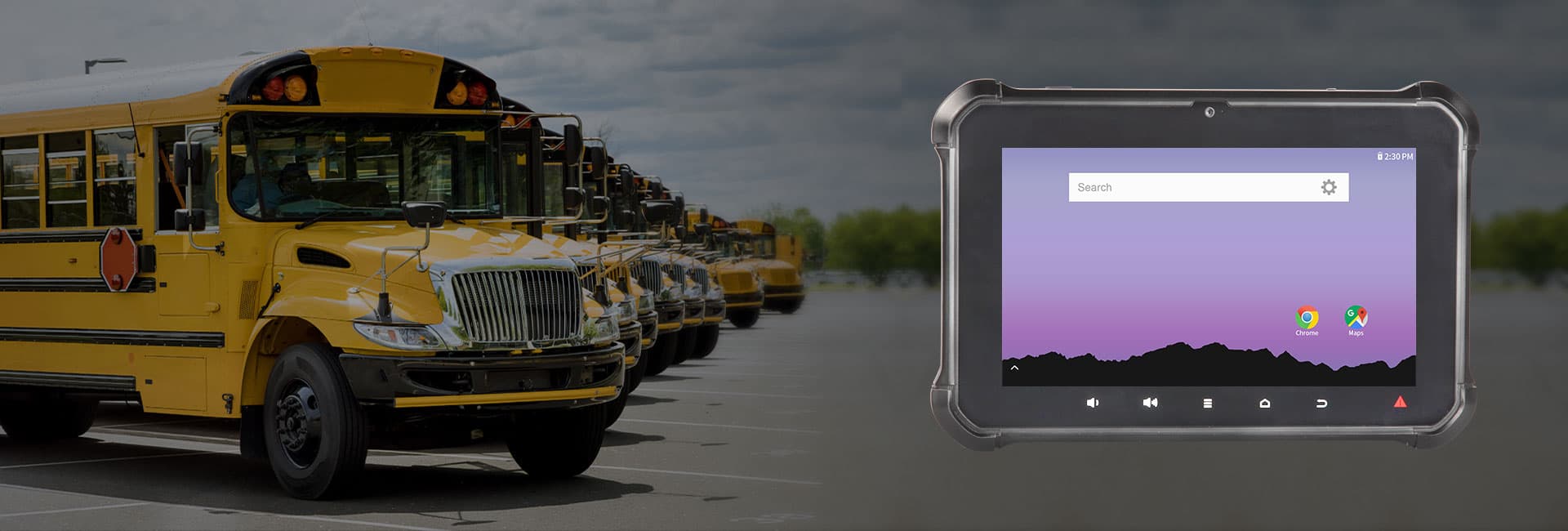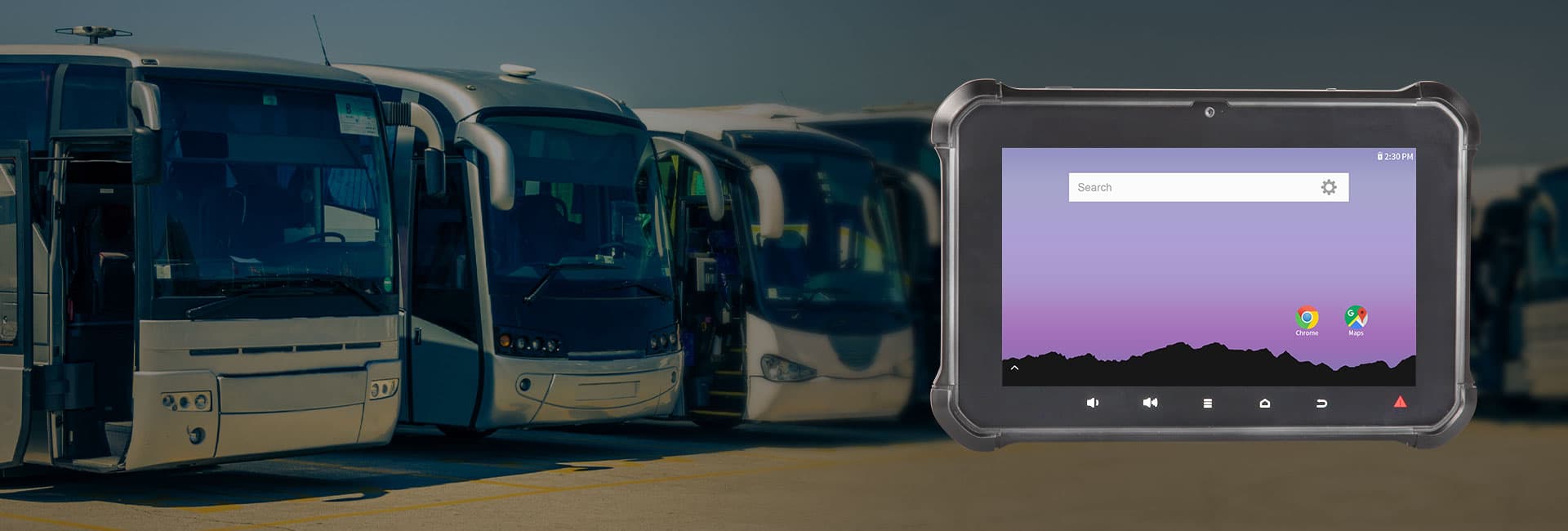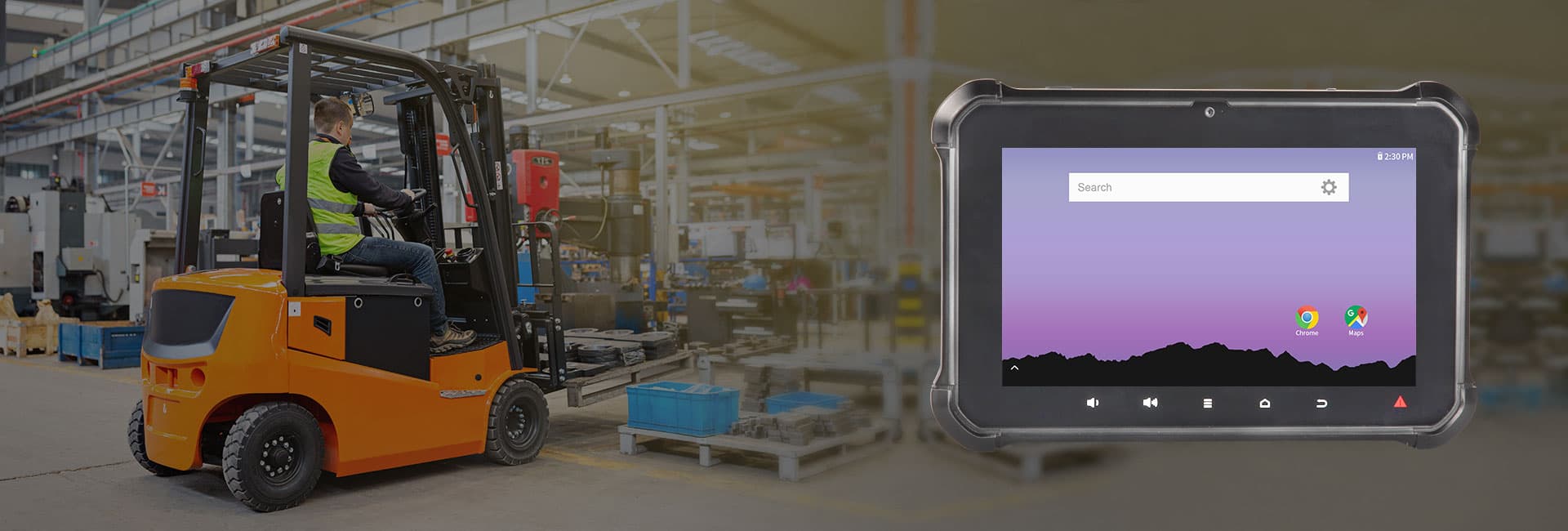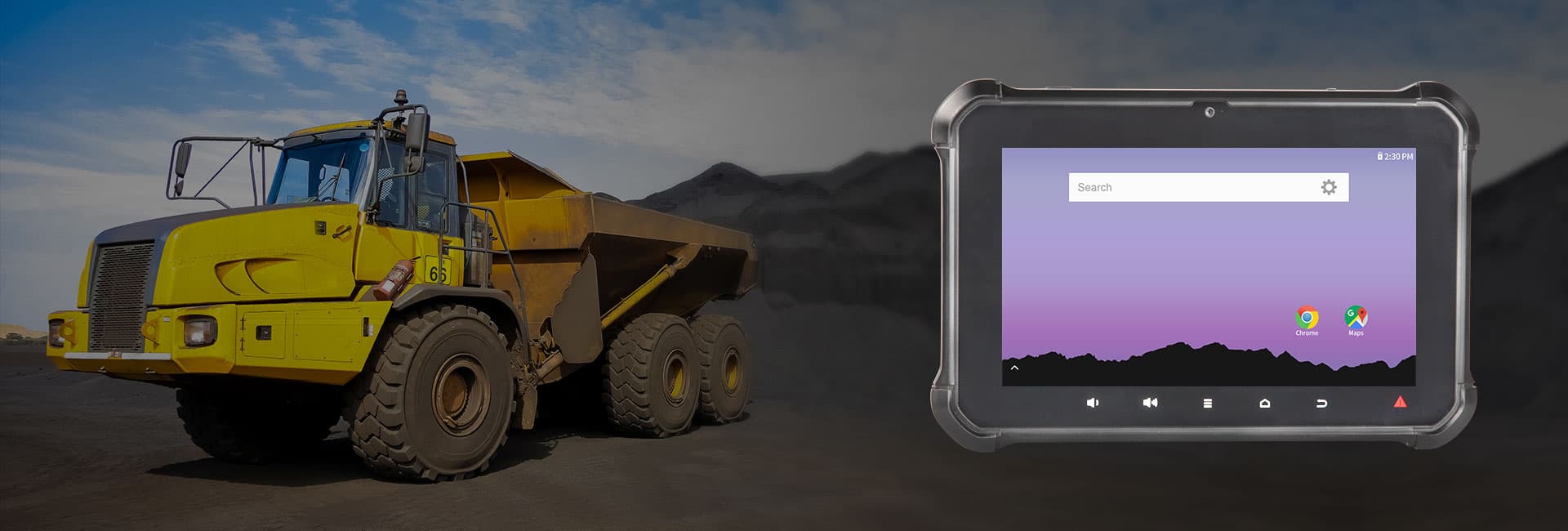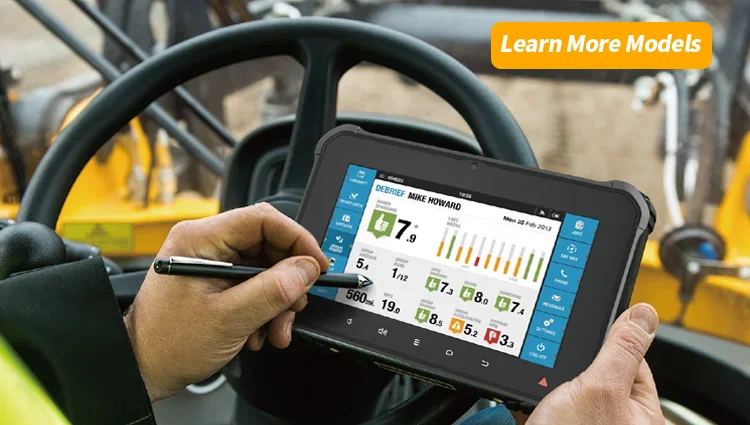Home > Blog > Powering Your Fleet: The Definitive Guide to Rugged Tablets
Powering Your Fleet: The Definitive Guide to Rugged Tablets
Time: 2025-07-15 Editor: Hitekon Rugged Vehicle Tablet Rugged Vehicle Tablet Manufacturer
Introduction: A New Era for Fleet Management
In shipping and moving stuff around, every moment really matters. And let’s be real, the tools you equip your team with can make or break your bottom line. Enter the rugged tablet for fleet management—a game-changer that’s nothing short of a revolution. This isn’t just your average tablet; it’s a powerhouse built to withstand the harshest conditions, from a bumpy ride in a delivery truck to a downpour on a construction site. It’s designed to be dropped, shaken, and exposed to dust and grime, all while keeping your operations humming along.
Gone are the days of fragile consumer electronics and bulky, single-purpose devices. Today, a rugged tablet is the Swiss Army knife of the mobile workforce, integrating everything from GPS and communication to data collection and reporting into one durable, easy-to-use device. This comprehensive guide will walk you through everything you need to know about these invaluable tools, from their core features and benefits to how to choose the right one for your specific needs. So, buckle up, because we’re about to take a deep dive into the world of rugged tablets and how they can supercharge your fleet’s efficiency.
What Makes a Tablet “Rugged”?
So, what’s the big deal with a rugged tablet? It’s all about the armor, my friends. Unlike a consumer-grade tablet that would shatter at the first sign of trouble, a rugged tablet is engineered from the ground up for survivability. Think of it as a fortified bunker in tablet form. The magic lies in its construction, which typically includes:
- Reinforced chassis: Often made from magnesium alloy or hardened plastic, the chassis is designed to absorb impact and resist bending.
- Sealed ports and enclosures: With ingress protection (IP) ratings like IP65 or IP67, these tablets are sealed against dust, dirt, and water jets or even temporary submersion. This is crucial for environments where things get messy—and they always do.
- Guerilla glass or similar toughened displays: The screen is the most vulnerable part of any device. Rugged tablets use specialized, scratch-resistant glass that can withstand drops and impacts without cracking. Many also feature sunlight-readable displays, a huge plus for drivers working outdoors.
- Military-standard durability: Many rugged tablets are tested against MIL-STD-810G, a U.S. military standard that covers a wide range of environmental stresses, including drops, vibrations, extreme temperatures, and humidity. If it can survive a battlefield, it can certainly handle your fleet.
Simply put, a rugged tablet is a purpose-built tool. It’s not a luxury item; it’s an essential piece of equipment for any operation where a device needs to perform reliably in non-ideal conditions.
The Powerhouse Benefits: Why Your Fleet Needs Rugged Tablets
The benefits of integrating rugged tablets into your fleet are manifold, and they extend far beyond simple durability. These devices are a catalyst for operational excellence.
1. Boosting Productivity and Efficiency
Imagine a world where your drivers no longer have to juggle a paper manifest, a standalone GPS unit, and a two-way radio. With a rugged tablet, all these functions are consolidated into one seamless device.
- Real-time data access: Drivers can instantly access delivery schedules, customer information, and route updates. This means fewer phone calls to dispatch and more time on the road.
- Optimized routing: Many rugged tablets come equipped with advanced GPS and fleet management software, providing optimized routes that save fuel and time. No more getting lost in unfamiliar territory!
- Digital paperwork: Say goodbye to endless stacks of paper. Drivers can capture digital signatures, take photos of delivered goods, and fill out inspection forms directly on the tablet, all of which is instantly synced with the central office. This reduces clerical errors and speeds up billing.
2. Enhancing Driver and Asset Safety
Safety is paramount, and rugged tablets play a critical role in a safety-first culture.
- Hands-free operation: Many tablets can be securely mounted in the vehicle’s cab, allowing drivers to view information and navigate without fumbling with their device. This is a big win for safety and compliance.
- Vehicle diagnostics: Rugged tablets can connect to a vehicle’s onboard diagnostics (OBD) port, providing real-time data on engine health, fuel consumption, and vehicle performance. This allows for proactive maintenance and prevents costly breakdowns.
- Lone worker safety: For drivers operating in remote areas, rugged tablets can be equipped with panic buttons or “man down” sensors that automatically alert dispatch in case of an emergency.
3. Streamlining Operations and Communication
One of the most significant advantages is the ability to create a truly connected ecosystem.
- Centralized command: Dispatchers can see the exact location of every vehicle, assign new jobs, and communicate with drivers in real-time. This provides an unprecedented level of visibility and control.
- Inventory and asset tracking: Whether it’s tracking packages or managing equipment, a rugged tablet with an integrated barcode scanner or RFID reader makes inventory management a breeze.
- Improved customer service: With real-time updates and proof of delivery, you can provide your customers with accurate delivery windows and resolve disputes with verifiable data.
Choosing the Right Rugged Tablet: What to Look For
With so many options on the market, choosing the right rugged tablet can feel overwhelming. Here’s a checklist of key features to consider:
- Operating System (OS): Do you prefer Android or Windows? Android tablets are often more affordable and have a vast ecosystem of apps, while Windows tablets offer seamless integration with office software.
- Screen Size and Resolution: A larger screen (8-10 inches) is great for viewing maps and forms, while a smaller screen (7 inches) might be better for handheld use. High resolution and a bright display are a must for visibility.
- Battery Life: This is a huge one. Look for a device with a swappable battery or one that can last a full shift. Nothing is more frustrating than a dead device in the middle of a job.
- Connectivity: Look for robust Wi-Fi, 4G/5G LTE, and Bluetooth for seamless connectivity on the go.
- Peripherals and Accessories: Consider what extras you need. Do you need a barcode scanner, an RFID reader, a secure vehicle mount, or a vehicle charger? Many manufacturers offer a wide range of add-ons tailored for fleet use.
- Service and Support: What’s the warranty like? Does the manufacturer offer a service plan? A good support system is crucial, as a broken device can mean lost revenue.
Common Questions (FAQs) about Rugged Tablets for Fleets
1. Are rugged tablets worth the extra cost?
Absolutely. While the initial investment might be higher than a consumer tablet, the total cost of ownership (TCO) is often much lower. Think about it: how many times have you had to replace a cracked screen or a water-damaged device? A rugged tablet’s durability means less downtime, fewer repair costs, and a longer lifespan. The productivity gains alone can quickly justify the investment, making it a no-brainer for any serious fleet manager.
2. Can I use a consumer tablet with a rugged case?
This is a common question, and the short answer is no. A rugged case adds some protection, but it’s not a substitute for a purpose-built device. A consumer tablet’s internal components, from the motherboard to the battery, are not designed to withstand constant vibration, extreme temperatures, or the kind of drops and shocks a fleet device encounters. The ports and seals on a consumer tablet are also not rated for dust or water resistance. In a high-stakes environment, a consumer tablet in a case is a ticking time bomb.
3. How do rugged tablets handle software updates and security?
Most reputable rugged tablet manufacturers provide long-term software support and regular security patches. Unlike consumer devices that might become obsolete in a couple of years, rugged tablets are built to last, and so is their software support. Many also offer tools for remote device management, allowing your IT team to push updates, manage apps, and ensure security protocols are in place without having to physically handle each device. This ensures your entire fleet stays secure and up-to-date.
Conclusion: The Future is Rugged
In the world of logistics, the adage “time is money” has never been more true. The humble rugged tablet for fleet has emerged as a cornerstone of modern operations, transforming how businesses manage their mobile workforce, track assets, and serve their customers. It’s more than just a piece of tech; it’s a strategic asset that improves safety, enhances communication, and drives profitability.
The rugged tablet is the unsung hero of the supply chain, quietly and reliably performing its duties day in and day out, no matter what the job throws its way. If you’re looking to get a leg up on the competition and truly empower your team, it’s time to embrace the rugged revolution. The future of your fleet depends on it.
Previous: Rugged Tablets for Mining Operations: The Ultimate Solution for Harsh Environments
Next: Driving Success: Why Rugged Tablets Are a Game-Changer for the Taxi Industry
Copyright © 2025.Hitekon Rugged Vehicle Tablet All rights reserved.
Public Transportation, Taxi Dispatch, Mining, Forklift Safety, Fleet Management, Precision Agriculture

